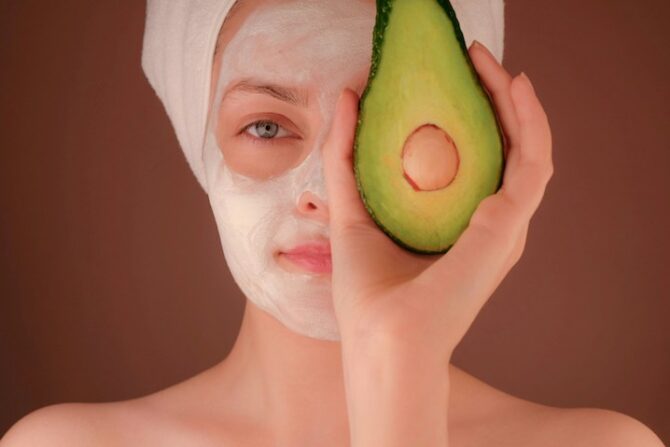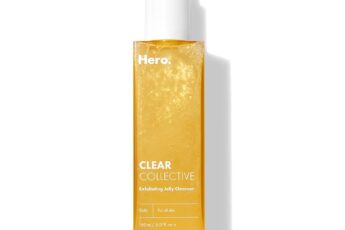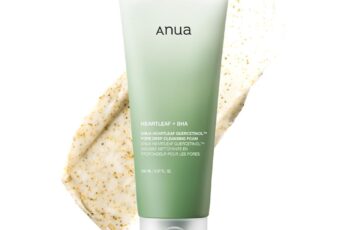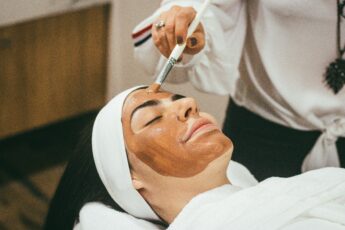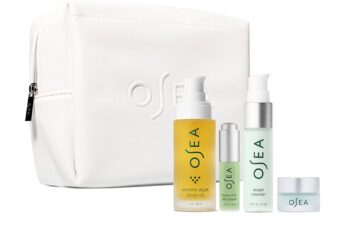The right cleanser can make a big difference – especially with sensitive skin. It is not just about that clean, fresh feeling but also the health and balance of your skin. In this article, we will be discussing “Jelly Cleansers vs Foaming Cleansers” as we try to understand which one would be able to suit people with sensitive skin concerns.
For sensitive skin, this is a very important decision , as skin often reacts easily to ingredients or overly drying formulations. Some cleansers strip away the skin’s natural oils, which can leave it dry and easily irritated; others may be too rich – in which case pores can become inflamed and give rise to an eruption. In a choice between jelly cleaners and foaming cleaners, both of which have their own unique merits, it is important to know where the difference lies and how they may work with your skin type.
We’ll also be taking a closer look at some of the best products: Mad Hippie Jelly Cleanser, Hero Cosmetics Clear Collective Exfoliating Jelly Cleanser, La Roche-Posay Toleriane Purifying Foaming Facial Cleanser, and ANUA Heartleaf Quercetinol Pore Deep Cleansing Foam. By the time you’re finished reading this, you’ll have a clear idea of exactly what to look for in the best cleanser for sensitive skin.
Table of Contents
Understanding Jelly Cleansers
Over the years, jelly cleansers have gained momentum in markets due to their gentle and hydrating nature. Generally, unlike common foaming cleansers, jelly cleaners have thick, gel-like skins that are mostly low or no-foam. This cleanser typically focuses on hydration and mild cleansing, which may be an advantage to sensitive skin.
Generally, jelly cleaners are water-based. Sometimes, they may also contain some oils that effectively take away makeup, sunscreen, and impurities from the skin without disrupting the skin’s natural barrier. This is an important characteristic for sensitive skin, since preservation of the skin barrier prevents irritation. Soothing moisturizers, such as glycerin or hyaluronic acid, and anti-irritant active ingredients such as aloe vera or chamomile extract are common active ingredients of such cleansers.
Advantages of Jelly Cleansers for Sensitive Skin
- Mild and non-drying to support moisture retention.
- Has a lot of soothing ingredients.
- Can effectively remove makeup and impurities without harsh surfactants.
Disadvantages of Jelly Cleansers for Sensitive Skin
- Does not deep clean for those with oily or acne-prone skin
- May not lather, which some people find less satisfying or effective-feeling
What are Foaming Cleansers?
Foaming cleansers, as the name suggests, forms a foam upon mixture with water. This type of cleanser has been in demand because of the “squeaky clean” feeling it leaves due to the degradation of oil, dirt, and other impurities. However, there are some foaming cleansers whose active cleaning agents can be too drying or irritating to sensitive skin.
Of course, not all foaming cleansers are alike. Some are for sensitive skin and have mild ingredients like glycerin or niacinamide that soothe and protect the skin barrier. Foaming cleansers work wonders in correcting excess oil or clogged pores, which makes them perfect for combination skin that has areas of sensitivity.
Benefits of Using Foaming Cleansers on Sensitive Skin
- Very effective in stripping away excess oil and impurities, and good for combination skin.
- Leaves the skin very clean, which is pretty helpful after makeup has been worn.
Cons of Foaming Cleansers for Sensitive Skin:
- Sometimes strips the face of its natural oils, which results in dryness or irritation.
- Some formulations contain surfactants that disrupt the skin barrier.
Product Reviews
Mad Hippie Jelly Cleanser

The Mad Hippie Jelly Cleanser is an oil-based surfactant-free cleanser in a gel format. This product contains antioxidants such as rich green tea, white tea, rose, resveratrol, and chamomile, combined with sea buckthorn berry, which is rich in essential fatty acids. This cleanser is designed to dissolve and wash away makeup, dirt, and other impurities without stripping the skin of its natural acid mantle.
This jelly cleanser helps with hydration and protection of sensitive skin without adding in chemicals or synthetic fragrances. Its antioxidant-rich formula is anti-aging, good for those who would want to retain their youthful features as time plays its role.
Pros
- Hydrating and non-drying which makes it is perfect for sensitive skin
- Vegan, cruelty-free and free from parabens, sulfates, and synthetic fragrances
Cons
- May not be effective for oily or acne-prone skins.
- Does not lather, so may feel less effective to some.
Hero Cosmetics Clear Collective Exfoliating Jelly Cleanser
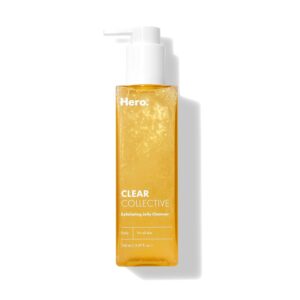
The Hero Cosmetics Clear Collective Exfoliating Jelly Cleanser boasts a jelly-to-foam experience with exfoliating properties, making this suitable for acne-prone, sensitive skin. AHA, BHA, and PHA exfoliate the dead skin cells, added oil, and impurities. This formula is sans sulfate, paraben, and phthalate-that may cause irritation-and all of these are found not to be good for any sensitive skin.
As a daily exfoliating cleanser, it is soft, and gentle enough to keep your skin clear without drying it out through the machine of its harshness. The jelly texture turns into a foam, providing a soft cleanse that is also satisfying to use.
Pros
- Gentle exfoliation to aid in clearer skin
- No irritating active ingredients, fragrances and parabens
Cons
- Very sensitive skins may find the exfoliation too much if used every day.
- Higher cost than other cleansers.
La Roche-Posay Toleriane Purifying Foaming Facial Cleanser

La Roche-Posay Toleriane Purifying Foaming Facial Cleanser contains a combination of mild active ingredients including Ceramide-3 and niacinamide. Niacinamide, being known for its calming and protective properties, calms the sensitive skin while strengthening the barrier of the skin. Ceramide-3 helps in moisture retention; hence, the skin does not get overly dry after washing.
This formula foams to create a rich lather that cleanses away impurities and oil without stripping skin of its moisture. It is best for sensitive skin because the formula has been dermatologically tested, and La Roche-Posay’s prebiotic thermal water has been added to reinforce skin health. In particular, those who are most prone to irritation will find this to be the case.
Pros
- Formula includes soothing active ingredients such as niacinamide and Ceramide-3
- Effectively cleans impurities away without stripping skin of its moisture
Cons
- It might be a little less moisturizing than some jelly cleansers.
- The foaming could be just a bit drying for super-sensitive or super dry skin.
ANUA Heartleaf Quercetinol Pore Deep Cleansing Foam
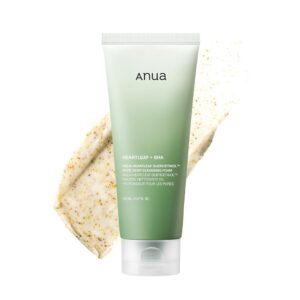
ANUA Heartleaf Quercetinol Pore Deep Cleansing Foam presents a lightweight foam enriched with Heartleaf Extract – an anti-inflammatory component, making it an excellent ingredient for sensitive skin. The formula contains an extra 0.5% BHA, gentle exfoliation on the skin, unclogs pores, and controls oil without the need for physical scrubbing.
This is a deeply cleansing yet gentle foaming cleanser. The calming benefits are brought about by Heartleaf extract. Adding to that, the triple hyaluronic acid keeps the skin hydrated and fresh after washing.
Pros
- Anti-inflammatory Heartleaf Extract soothes down skin.
- Contains BHA for exfoliation and controlling oil.
Cons
- Can be too much for very sensitive skin if used too frequently.
- Not as moisturizing as some other non-foaming cleansers.
Jelly Versus Foaming Cleansers: Which is Best for Sensitive Skin?
All in all, when comparing jelly cleansers with foaming cleansers concerning sensitive skin, it simply depends on your preference or specific skin needs. The benefits of jelly cleansers are their soothing and nourishing means of cleansing the skin; thus, being very effective with sensitive skin that is also dry. They lock the moisture of the skin without causing irritations; hence, they are very good for everyday use.
Foaming cleansers provide a much deeper cleanse, better suited for people with excess oil or congestion of pores. Not all foaming cleansers are drying, though; some, like La Roche-Posay’s and ANUA’s foaming cleansers, contain ingredients to help retain moisture and are more friendly even to the most sensitive skin.
Also Read: How To Make Homemade Nail Detox Soaks
With sensitive skin, if hydration is key, you should start with a jelly cleanser, while oily skin in need of control may look to a gentle foaming cleanser that incorporates soothing ingredients. Remember to patch-test new products and observe how your skin reacts over time.
Conclusion
It’s actually about knowing your skin when it comes to jelly cleansers versus foaming cleansers for sensitive skin. Jelly cleansers excel at maintaining hydration and gently cleansing, while foaming cleansers offer a deeper clean that’s beneficial for oil-prone skin types. This is all about your preference, and with products like Mad Hippie, Hero Cosmetics, La Roche-Posay, and ANUA, you will find the right product easily without harming your skin health in any way.
Frequently Asked Questions
What is the main difference between jelly and foaming cleansers?
Jelly cleansers are generally thicker and offer a moisturizing, low-foam cleansing, while foaming cleansers subsequently foam up and really work to deeply clean the skin.
Can a foaming cleanser be gentle enough for sensitive skin?
Yes, some foaming cleansers have mild ingredients in their formulation that would support sensitive skin and avoid dryness and irritation.
How often should I use these cleansers on sensitive skin?
For sensitive skin, you can use jelly cleansers daily, using the foamy cleansers only when absolutely necessary and when your skin can take it.
Which one removes makeup better?
Jelly cleansers serve as better makeup removers, especially oil-based types, because they dissolve these oil-based products without needing to use aggressive friction.

